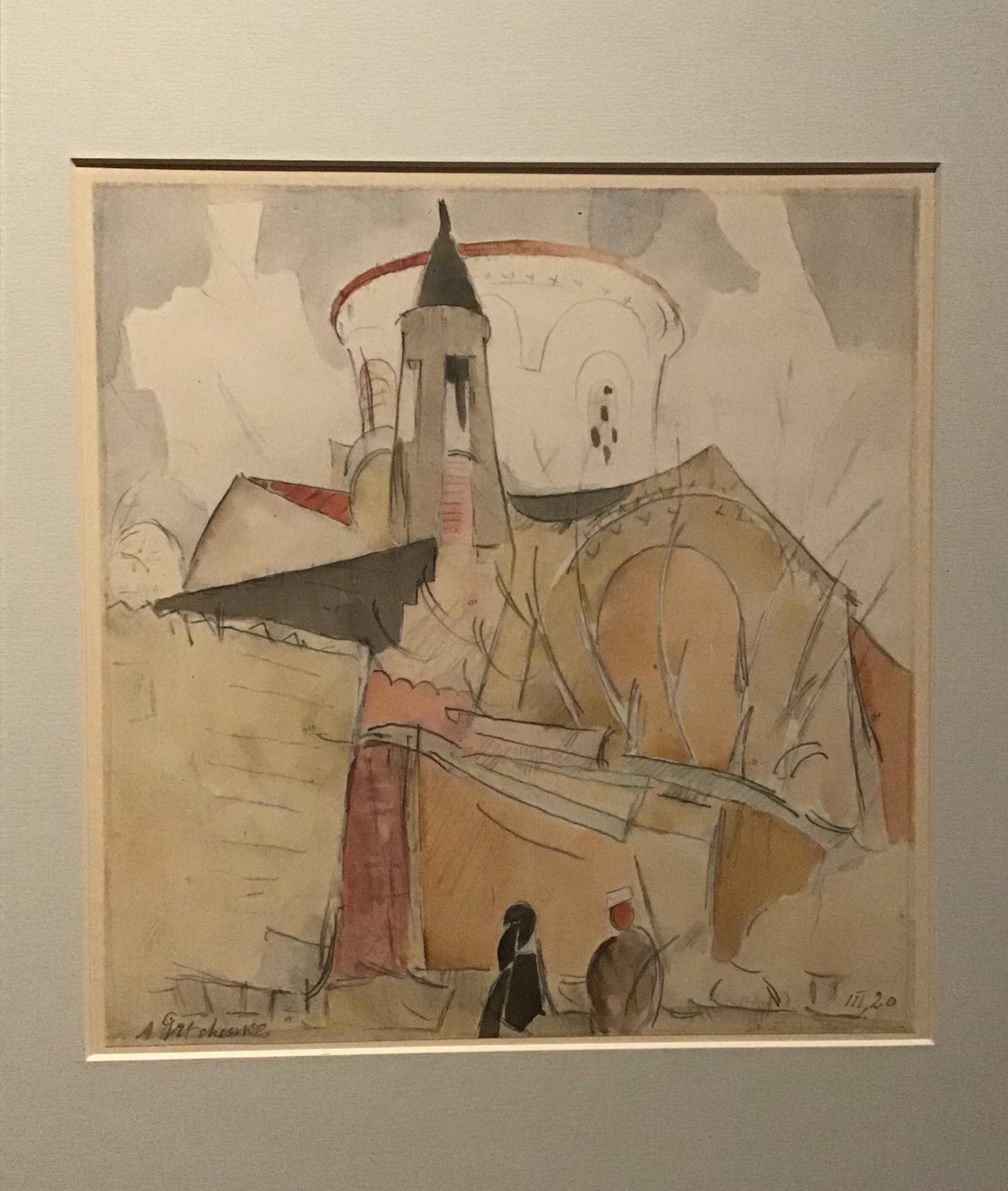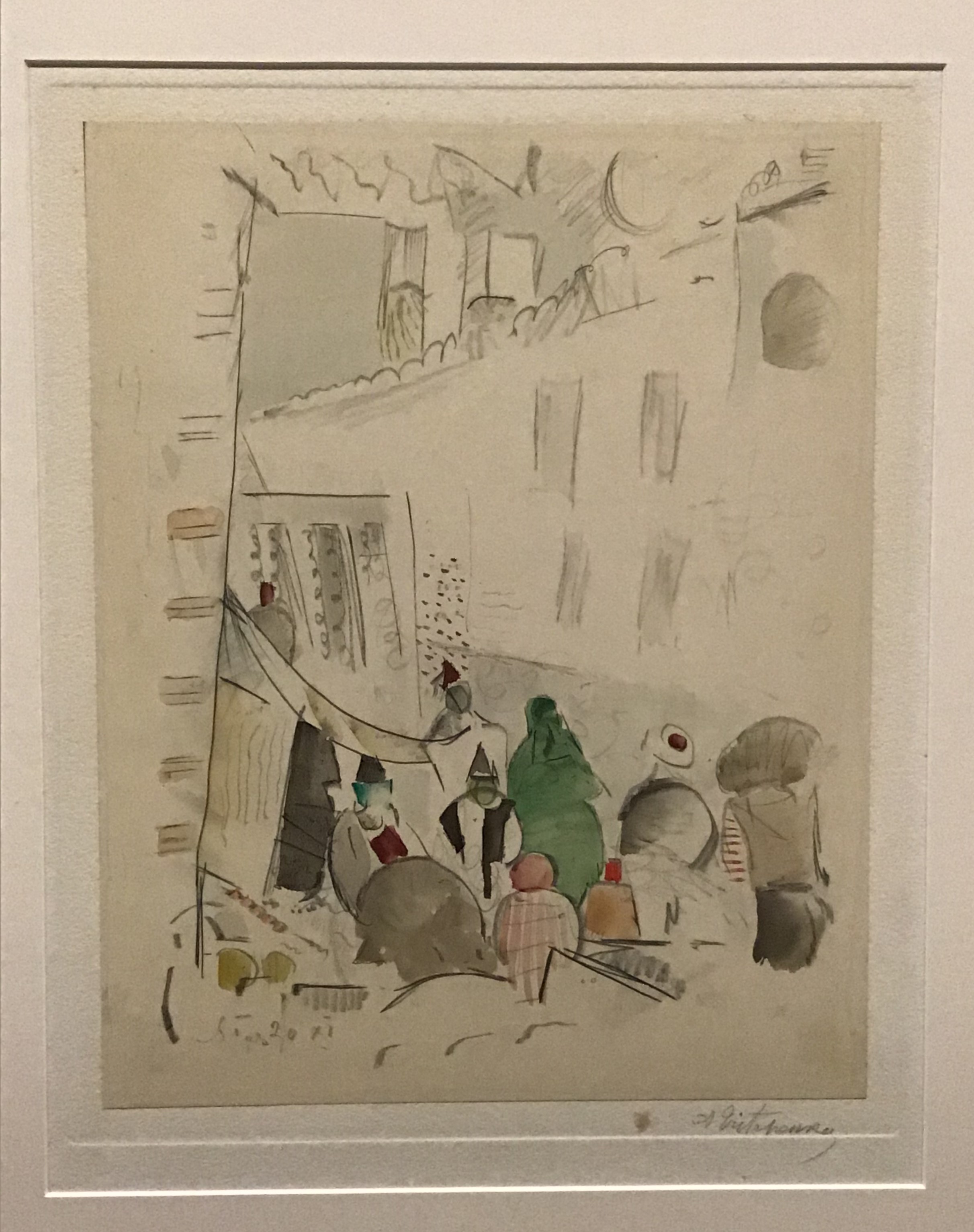Archive
Alexis Gritchenko
- Alexis
- Gritchenko
Алексей Грищенко, Олексі́й (Олекса) Васильович Грищенко, Alexey Gritchenko, Oleksa Hryshchenko
- 02-04-1883
- Krolevets (UA)
- 28-01-1977
- Vence (FR)
- PainterArt Historian
During the two years of his life that he spent in Istanbul, Alexis Gritchenko produced more paintings dedicated to the city than many artists produce in an entire lifetime.
Word Count: 29

Portrait of Alexis Gritchenko by Turkish painter Namık İsmail, 1920. Private collection. Istanbul, Meşher Art Gallery, “Alexis Gritchenko – İstanbul Yılları” Exhibition (Photo: Ekaterina Aygün, 2020). 
Portrait of Alexis Gritchenko by Turkish painter Namık İsmail, 1920. Private collection. Istanbul, Meşher Art Gallery, “Alexis Gritchenko – İstanbul Yılları” Exhibition (Photo: Ekaterina Aygün, 2020). 
Istanbul, Meşher Art Gallery, “Alexis Gritchenko – İstanbul Yılları” Exhibition (Photo: Ekaterina Aygün, 2020). 
Byzantine Church Converted Into a Mosque, March 1920. Collection of the National Art Museum of Ukraine. Istanbul, Meşher Art Gallery, “Alexis Gritchenko – İstanbul Yılları” Exhibition (Photo: Ekaterina Aygün, 2020). 
Landscape with Domes, October 1920. Collection of the National Art Museum of Ukraine. Istanbul, Meşher Art Gallery, “Alexis Gritchenko – İstanbul Yılları” Exhibition (Photo: Ekaterina Aygün, 2020). 
Street in Eyüp, November 1920. Ömer Koç Koleksiyonu. Istanbul, Meşher Art Gallery, “Alexis Gritchenko – İstanbul Yılları” Exhibition (Photo: Ekaterina Aygün, 2020). 
Three Turks in a Coffeehouse, February 1921. Ömer Koç Koleksiyonu. Istanbul, Meşher Art Gallery, “Alexis Gritchenko – İstanbul Yılları” Exhibition (Photo: Ekaterina Aygün, 2020). Alexis Gritchenko. The Constantinople Years, edited by Ayşenur Güler and Vita Susak, exh. cat. Meşher, Istanbul, 2020.
Gritchenko, Alexis. İstanbul’da İki Yıl 1919–1921 – Bir Ressamın Günlüğü. Translated by Ali Berktay, Yapı Kredi Yayınları, 2020.
Hewitt, Simon. “Slaughtered Genius: Alexis Gritchenko – Dynamocolor. Book Available.” 26 December 2017, russianartandculture.com, https://www.russianartandculture.com/slaughtered-genius-alexis-gritchenko-dynamocolor/. Accessed 20 June 2020.
Vzdornov, Gerol’d. “Russkiye hudojniki i vizantiyskaya starina v Konstantinopole.” Tvorchestvo, no. 2, 1992, pp. 30–32.
Word Count: 71
Istanbul, Ottoman Empire/Turkey (1919–1921); Paris, France (1921–1924); Southern France (1924–1977).
Overnight shelter in Harbiye, Istanbul (residence); camp controlled by the British Occupation Forces in Büyükada between March and July 1920 (residence and studio in Istanbul); family mansion in Beşiktaş of Turkish painter Namık İsmail in 1920 (studio in Istanbul); attic in the house in Çemberlitaş belonging to Turkish painter Ibrahim Çallı between October and December 1920 (residence and studio in Istanbul).
- Istanbul
- Ekaterina Aygün. "Alexis Gritchenko." METROMOD Archive, 2021, https://archive.metromod.net/viewer.p/69/2949/object/5138-10436381, last modified: 16-09-2021.
-
Leon TrotskyPoliticianIstanbul
Banished by Stalin, the revolutionary politician Leon Trotsky and his entourage arrived in Istanbul in 1929. He settled on Büyükada, one of the Princes’ Islands in the Sea of Marmara.
Word Count: 31
Dimitri IsmailovitchPainterArt HistorianIstanbulIn Istanbul, Ismailovitch became one of the leaders of the Union of Russian Painters in Constantinople, organised three solo exhibitions, and made contribution to the study of Byzantine art.
Word Count: 29
Nikolai KalmykoffPainterScene DesignerMuralistIstanbulKalmykoff played an active part in the Union of Russian Painters in Constantinople and at the same time worked as a stage designer. Later he acquired the Turkish citizenship.
Word Count: 29
Russkiy v Konstantinopole/Le Russe à ConstantinopleGuide-bookIstanbulThe guide-book was created for Russian-speaking refugees who had to leave their country and settle in Constantinople.
Word Count: 17
Nikolai KlugePainterPhotographerArt restorerArchaeologistCopyistIstanbulAs a non-regular employee at the Russian Archaeological Institute of Constantinople before the Russian Revolution, Nikolai Kluge was perhaps the émigré artist most familiar with Istanbul.
Word Count: 26
Pera Palace HotelHotelIstanbulThe Pera Palace was the gem of Pera district where people gathered to wine and dine and be entertained, as well as to discuss the issues of the day.
Word Count: 29